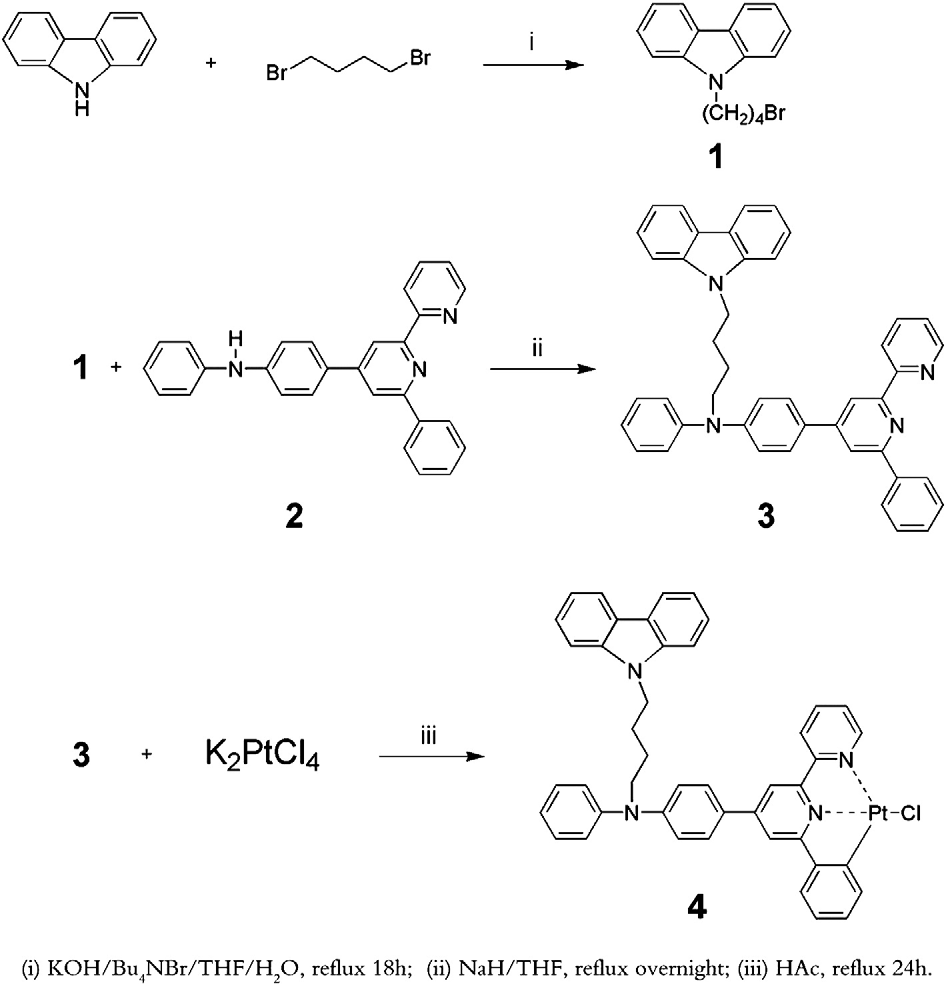Carboxylic acids, C2-3
CAS number: 68475-71-8
Carboxylic acids, C2–3 is a low-molecular-weight carboxylic acids containing two to three carbon atoms, primarily including acetic acid (C2) and propionic acid (C3).
Related images

Carbazole was directly coupled with excess 1,4-dibromobutane under strong alkaline conditions to give 9-(4-bromobutane)carbazole (1). 4-(p-bromophenyl)-6-phenyl-2,2′-bipyridine was synthesized by the Kröhnke method. A strong palladium-catalyzed Buchwald method and an efficient Pd(OAc)2/DPEphos catalyst/ligand system were used to promote the condensation of aniline with 4-(p-bromophenyl)-6-phenyl-2,2′-bipyridine. The resulting intermediate (2) was then reacted with 9-(4-bromobutane)carbazole (1) to give the ligand HL (3). The ligand HL (3) and K2PtCl4 were refluxed in glacial acetic acid for 24 h to synthesize the cyclometalated Pt(II) chloride 4 with a yield of more than 80%.
![Synthesis route of HL3 and the corresponding cyclometalated PtII complex [Pt(L3)Cl] ACHTUNRTGNEUNG[PF6]: a) NaH, 1,5-dibromopentane; b) PPh3; c) K2PtCl4, glacial acetic acid.](http://www.wlxkc.cn/picture/4465522_05.png)
Synthesis route of HL3 and the corresponding cyclometalated PtII complex [Pt(L3)Cl] ACHTUNRTGNEUNG[PF6]: a) NaH, 1,5-dibromopentane; b) PPh3; c) K2PtCl4, glacial acetic acid.
Related Questions and Answers
No related questions yet
